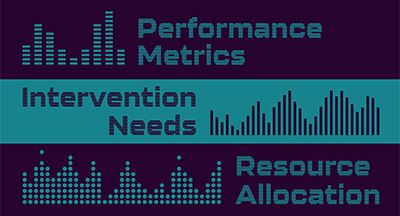
Reactive mental health waits for an explosion before responding. Proactive mental health can feel like a lush garden, a structured foundation, and/or a kick in the pants.
Mental and physical healthcare can be nourished outside a school setting, but students spend so much time on campus that it’s helpful to take a supportive stance.
Consider these strategies for getting students thinking proactively about their own mental health.
Power to the students
Proactive care gives students a toolbox to care for themselves. It’s not about affirmations or prizes (although those types of positive reinforcement can help!). Proactive mental health practice in school is about learning just as much as core curriculum is. Learning to care for their own inner world can help students struggling to know where they fit in a chaotic outer world.Consider three initiatives designed to get kids thinking about self-care.
1. Coping with big feelings. This looks like modeling breath work, exploring guided meditation, learning when to ask for help, and knowing when to take a break. These types of de-escalation skills can help students keep each other safe in schools and far beyond. When it feels normal to be out of control, chaos reigns. When keeping calm is a regular part of daily life, those teamwork muscles get stronger. When the language of self-control is learned early on in life, it’s easier to become fluent and keep your skills sharp as an adult.
2. Self-concept work for young students. Encouraging students to answer questions such as Who am I? and What am I good at? can help students see themselves as important and valid. Unfortunately, educators may be the first adults to ever prompt a child to look deeper into their own self-image. There’s no better time to start.
3. Self-investment work for students. Once students gain a little confidence through their self-concept work, they’ll need to ask themselves What can I do better at? While it’s tempting for students to look at this in terms of GPA, awards, or other quantitative pursuits, in the mental health realm this also looks like improving their social and emotional skills.
Behavior is communication
Whether negative or positive, the way students act and interact with each other is sending a message to their adults. Educators and parents can work together to communicate about student behavior as much as academic performance.Student information systems (SIS) built for communication eliminate multiple data entry and sends families behavior information quickly through a parent portal, eliminating the need to pick and choose from dozens of communication options.
Proactive strategies backed by measurement and data
It can be tricky to quantify the so-called “soft” skills kids are learning (teamwork, time management, and problem solving, for example). Tricky doesn’t equal impossible, and with some creative management in your SIS, tracking behavior gets easier.Behavior tracking doesn’t need to be a purely punitive practice. On the contrary, consider using the flexibility your SIS provides to track positive behavior interactions alongside infractions.
Educators and families can recognize students developing proactive and positive social behaviors and skills.
Access to high quality behavior data, whether positive or punitive, helps administrators make decisions about the districts they lead. Educational data analytics provide the insight needed to allocate resources more effectively, to know which students need intervention, and to know when and where to add staff and support in a K12 school.
Mental health is absolutely a team sport. The rules and players change without warning, and the challenge looks different every day. Schools are tasked with so much, but creating a safe place for students to gain some mental and emotional peace is powerful.
A little strategy and data provides a life-altering payoff in this case.
WHAT'S NEXT FOR YOUR EDTECH? The right combo of tools & support retains staff and serves students better. We'd love to help. Visit skyward.com/get-started to learn more.

|
Erin Werra Blogger, Researcher, and Edvocate |
Erin Werra is a content writer and strategist at Skyward’s Advancing K12 blog. Her writing about K12 edtech, data, security, social-emotional learning, and leadership has appeared in THE Journal, District Administration, eSchool News, and more. She enjoys puzzling over details to make K12 edtech info accessible for all. Outside of edtech, she’s waxing poetic about motherhood, personality traits, and self-growth.




